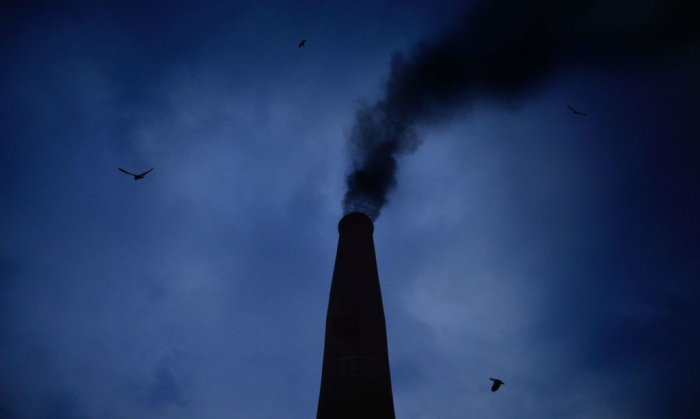The WMO says that there will be a reduction in global CO2 emissions for 2020 – but that it won't affect atmospheric levels of CO2 any more than normal year-to-year fluctuations, and maybe even less than that.
CO2 levels reached 410 parts per million in 2019, and the final figure for 2020 is expected to be higher, negating what we thought might be one bit of good news to come out of the global pandemic that has dominated this year.
While staying at home and sheltering in place has meant we've pumped less carbon dioxide into the atmosphere, there's so much of it already there that this year's reduction is unlikely to have much of a long-term impact.
"Carbon dioxide remains in the atmosphere for centuries and in the ocean for even longer," says WMO Secretary-General Professor Petteri Taalas.
"The last time the Earth experienced a comparable concentration of CO2 was 3-5 million years ago, when the temperature was 2-3°C [3.6-5.4°F] warmer and sea level was 10-20 metres [32.8-65.6 feet] higher than now. But there weren't 7.7 billion inhabitants."
As scientists have been warning for decades, more CO2 in the atmosphere means more heat gets trapped – temperatures go up, ice melts, extreme weather events happen more frequently, and the oceans acidify and become less hospitable to marine life.
Since 1990, the WMO reports that greenhouse gases sticking around in the air have caused a 45 percent increase in total radiative forcing – the term given to the overall warming effect on the climate. CO2 accounts for four-fifths of this effect.
Other research agrees with the conclusion that atmospheric levels of greenhouse gases are still on an upward trend, not least because of the many factors not related to coronavirus lockdowns – such as melting permafrost, which releases long-trapped CO2 and methane into the air.
"We breached the global threshold of 400 parts per million [of CO2] in 2015," says Taalas. "And just four years later, we crossed 410 ppm. Such a rate of increase has never been seen in the history of our records."
That's not to stay lockdowns, shuttered workplaces, and reduced travel haven't made a difference: the WMO estimates that CO2 emissions were reduced by up to 17 percent at some points in the year, and could have dropped by 4.2-7.5 percent over the course of 2020 (we're still waiting for the final figures to come in).
However, that will only temporarily tap the brakes on atmospheric CO2 level rise. The amount of CO2 in the atmosphere is likely to go up again, though not by as much as in previous years – we saw a 2.6 ppm rise from 2018 to 2019, and the one from 2019 to 2020 could be about 0.08-0.23 ppm less than that.
If there is some hope from the COVID-19 pandemic, it may be in using it as a platform to serious tackle climate change – Taalas says that only a "complete transformation" of industrial, energy, and transport systems is going to be effective when it comes to lowering atmospheric CO2.
When you consider that the widespread and significant changes we've seen in human behaviour this year have barely made a dent in CO2 levels, it's clear the sort of challenge we're up against in reversing global warming.
"The COVID-19 pandemic is not a solution for climate change," says Taalas. "The lockdown-related fall in emissions is just a tiny blip on the long-term graph. We need a sustained flattening of the curve."
ScienceAlert
More about: #greenhousegases
















































